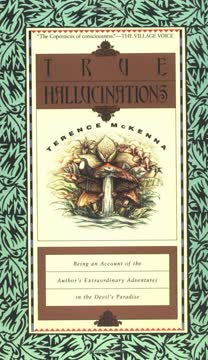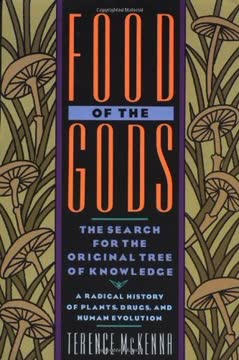Key Takeaways
1. The Amazon Beckons: Seeking Exotic Hallucinogens
We were involved, I imagined, in a deep jungle search for hallucinogens of a different sort: plants containing the orally active drug di-methyltryptamine (or DMT) and the psychedelic brew ayahuasca.
Driven by DMT. The expedition began with a specific goal: to find and experiment with potent, orally active DMT-containing hallucinogens used by Amazonian tribes, particularly the rare oo-koo-he of the Witoto people, based on ethnobotanical reports. The author's prior intense experiences with synthetic DMT in Berkeley had convinced him of its unique power to reveal "elf-haunted psychic landscapes" and other dimensions. The group believed these plants held the key to understanding shamanic states and the nature of reality itself.
A motley crew. The party of five (later six) consisted of the author, his brother Dennis (a botanist), Ev (translator and lover), Vanessa (anthropologist/photographer), and Dave (meditator/potter), later joined by Ev's eccentric ex-partner, Solo Dark. They were refugees from a society they felt was poisoned, seeking the psychedelic experience as a path to a hoped-for millennium, armed with limited knowledge and immense naive enthusiasm. Their journey down the Putumayo River was a physical and psychological descent into the unknown.
Ominous beginnings. The journey was marked by strange encounters, including the centenarian John Brown, a living link to the rubber boom atrocities, who spoke of the area's dark history and his own ayahuasca experiences at their destination, La Chorrera. The group's internal tensions, exacerbated by Solo's presence and the isolation, simmered beneath the surface of philosophical musings and observations of the vibrant, yet unsettling, jungle environment. The total lunar eclipse witnessed on the river felt like a portent of strange dimensions intersecting their world.
2. The Unexpected Mushroom: Discovery at La Chorrera
In the pasture before me were dozens of these mushrooms.
Arrival at destination. After a challenging overland trek from San Jose del Encanto, marked by Solo's departure and the group's increasing physical and emotional strain, they finally reached Mission La Chorrera, a remote settlement in the Amazonian interior. The location was paradisiacal, situated near a unique geological feature (the chorro) and, unexpectedly, featured pastures cleared by the mission. This seemingly mundane detail would prove pivotal.
A chance encounter. Almost immediately upon arrival, the group discovered Stropharia cubensis mushrooms growing abundantly in the mission's cow pastures. This was the same species the author had impulsively eaten near Florencia, which had given him a fleeting sense of another dimension. The discovery was entirely unexpected, as they had assumed such mushrooms would not be found in the deep jungle.
Shifting focus. The abundance and accessibility of the psilocybin mushrooms quickly eclipsed their original goal of finding oo-koo-he or ayahuasca. Despite having no data on dosage, they decided to experiment with the mushrooms that very evening. This spontaneous decision marked a significant pivot in their expedition, moving from a planned ethnobotanical search to an unplanned, direct engagement with a readily available psychedelic.
3. The Mushroom Reveals Itself: An Intelligent, Alien Presence
It had begun to dawn on me that the mushroom was in fact a kind of intelligent entity—not of earth—alien and able during the trance to communicate its personality as a presence in the inward-turned perceptions of its beholder.
Beyond mere hallucination. The initial mushroom experiences at La Chorrera were profound, described as multifaceted, benevolent, and intensely vivid, yet elusive. Unlike LSD, which felt psychoanalytic and personal, the mushrooms possessed a quality of aliveness and seemed to open "doorways into places I had assumed would always be closed." This led to the growing conviction that the mushroom was more than just a plant hallucinogen; it was an intelligent entity.
Communication and motifs. The mushroom seemed capable of communicating, presenting itself as an alien presence or a "vegetable teacher." Early experiences included:
- Shared inner visions between Terence and Dennis, suggesting telepathy.
- The idea of "elf chemists" and a "transdimensional doorway."
- A sense of the mushroom being "unclaimed" by any aboriginal people, offering neutral ground for exploration.
- An aura of the animate and strange, pulling the group deeper into its dimension.
Anticipating the bizarre. The author noted that the mushroom experience anticipated the absurd element often present in alien contact situations, as later described by Jacques Vallee. This early intimation of the mushroom's alien nature set the stage for the increasingly bizarre events that would unfold, challenging the group's understanding of reality and sanity. The experience was "mercurial and difficult to catch at work," yet undeniably powerful.
4. The Alchemical Experiment: Attempting Hyper-Carbolation
He called it hyper-carbolation.
Developing a theory. Following Dennis's bizarre experience with a "machine-like, loud, dry buzz" under the influence of mushrooms, he began to develop a complex, alchemical theory linking sound, superconductivity, and DNA. He hypothesized that specific vocalizations, combined with psilocybin and harmine (from ayahuasca), could manipulate molecular vibrations, potentially driving psychedelic molecules into a permanent, superconducting bond with neural DNA. This process was dubbed "hyper-carbolation."
The Great Work. The goal of this "Opus" was nothing less than the creation of a hyperdimensional, superconducting molecule – a modern-day philosopher's stone. This substance, envisioned as "translinguistic matter" or a "temporal hologram," would be a "solid-state hyperdimensional circuit" capable of:
- Acting as a superconducting antenna for information across space and time.
- Functioning as a memory bank of genetic history.
- Projecting holographic images and giving form to thought.
Setting the stage. The group, now polarized with Dave and Vanessa skeptical, decided to attempt this experiment. They brewed ayahuasca, gathered mushrooms (including one living specimen in its manure base), and prepared a harmine smoking mixture. The setting was their isolated hut in the forest, chosen for its privacy. The date was set for March 4th, coinciding with the author's pun "March fourth" as a command, adding a layer of synchronicity and absurdity to the high-stakes endeavor.
5. Reality Shifts: The Aftermath of the Experiment
What happened next was nothing less than a turn of events that would propel us into another world.
The night of the Opus. The experiment began on the night of March 4th. After consuming ayahuasca and mushrooms, the atmosphere in the hut became intensely charged. Time seemed to slow, and a candle flame appeared frozen, defying gravity. Dennis, hearing the hypothesized ESR tone, attempted the vocalizations, resulting in mechanical howls and physical spasms. The third attempt was a prolonged, siren-like wail that ended in silence.
Immediate, bizarre effects. In the silence, a cock crowed three times, adding to the sense of a staged drama. Dennis claimed success, stating the mushroom would be obliterated and replaced by a violet ring of light. While the mushroom remained physically intact, the author saw its cap transform into a vision of the Earth. This was followed by:
- A sudden, intense wave of cold air (a partial test of the theory).
- The onset of apparent telepathy between Terence and Dennis.
- A profound cognitive hallucination in Terence, convincing him they had reached the "omega point" and the millennium had begun.
Disorientation and division. The immediate aftermath was marked by confusion and a radical divergence in perception within the group. Dennis became increasingly disengaged from ordinary reality, exhibiting symptoms interpreted by some as schizophrenia. Terence, while outwardly functional, was immersed in a state of ecstatic, hyper-perceptive belief. Dave and Vanessa, witnessing the bizarre events and Dennis's state, became increasingly alarmed and skeptical, leading to a clear division within the expedition.
6. Telepathy and Shared Consciousness: Anomalous Communication
As we walked along, Dennis would make occasional comments that were, it burst over me, answers to things I was thinking but not articulating.
The "Ask Dennis" phenomenon. In the hours and days following the experiment, a striking form of apparent telepathy emerged between Terence and Dennis. Terence found that by simply thinking a question, prefaced with "Dennis," an answer would spontaneously appear in his mind, seemingly from his brother. This phenomenon, though sometimes yielding nonsensical or inaccurate information (like plant names), was deeply unsettling and convinced Terence that something extraordinary had occurred.
Accessing private memories. Even more compelling were instances where Dennis, in his altered state, seemed to access Terence's deeply private memories. The most striking example was Dennis's perfect imitation of Terence's English friend from Nepal, recounting a conversation about "knickers" that Terence had never shared with anyone else. This suggested a penetration not just of immediate thoughts, but of buried personal history.
Shared perceptions. Beyond telepathy, there were moments of shared visual or auditory phenomena that seemed to validate the idea of a collective, altered reality:
- The triple-layered corona of blue and orange light around a candle flame.
- The river appearing to stop moving.
- The recurring sound of the cock crowing at specific moments.
These shared, yet subjectively interpreted, experiences fueled the belief that they were interacting with an objective, albeit highly peculiar, phenomenon, rather than merely experiencing individual or mass delusion.
7. The UFO Manifests: A Temporal Mirage or Physical Object?
It was a saucer-shaped machine rotating slowly, with unobtrusive, soft, blue and orange lights.
Portents in the sky. In the days following the experiment, strange meteorological phenomena seemed to concentrate around La Chorrera, particularly in the southeast. These included sudden, violent thunderstorms and localized fogs. Terence and Ev witnessed a sustained column of light emerging from a storm cloud in the southeast, followed by a spot of intense, spectrogrammatic color in the same area the next day. These events felt like signs or signals, focusing attention on that specific direction.
The dawn encounter. On the morning of March 14th, after a sleepless night spent watching the southeast horizon, Terence witnessed a line of ground mist transform. It split into four lens-shaped clouds, which then recoalesced into a single, darker, churning cloud. This cloud then rapidly approached, accompanied by a high-pitched whine, solidifying into a clearly visible, saucer-shaped machine that passed directly overhead.
Interpreting the sighting. The experience was terrifying yet also filled with a sense of culmination and disappointment when the object didn't "take" him. The object's appearance, identical to the debunked George Adamski UFO photo, added a layer of absurdity and cognitive dissonance. Terence interpreted the event not as a conventional physical craft, but as:
- A holographic mirage of impossible perfection.
- A manifestation of an intelligent, humorous entity's control over form.
- A "temporal mirage," a lenticular image of a future technology or event.
The UFO became a powerful symbol, linking the Stropharia visions, the idea of a perfected human mind/resurrection body, and the potential for humanity to transcend current limitations of space and time.
8. The Timewave Theory: A Fractal Model of Time and Novelty
I had discovered the fractal dimension of time itself, a mathematical constant that replaces probability theory with a complex, but elegant—indeed an almost magical—set of constraints on the expression of novelty.
A new understanding of time. In the wake of the La Chorrera experience, particularly during his second return trip, Terence became obsessively immersed in developing a new model of time. Guided by the "inner voice" or "Logos," he began to see time not as a linear progression, but as a complex, fractal wave structure based on the ancient Chinese I Ching. This theory proposed that time has inherent patterns and cycles that condition the ingression of "novelty" into the universe.
The I Ching connection. The theory posits that the 64 hexagrams of the I Ching represent fundamental units or states of change. These states unfold in a specific sequence (the King Wen sequence) that mirrors the patterns of novelty across different scales of time, from microseconds to eons. The author's personal I Ching throws and life events seemed to align with these patterns, reinforcing his belief in the theory's validity.
Predicting the future. The timewave theory suggests that by mapping the historical record onto this fractal wave, one can identify periods of increasing or decreasing novelty and even predict future transitions or "epochs." The theory's best fit with historical data seemed to point to a period of maximum novelty, or a singularity, occurring on December 22, 2012, a date also significant in the Mayan calendar. This implied a radical transformation of reality or the "end of time" as we know it.
9. The Cosmic Giggle: Synchronicity and Absurdity Abound
It was, if you ask me—and there is no one else really that one can ask—either a holographic mirage of a technical perfection impossible on earth today or it was the manifestation of something which in that instance chose to begin as mist and end as machine, but which could have appeared in any form, a manifestation of a humorous something's omniscient control over the world of form and matter.
The pervasive absurd. Throughout the La Chorrera experience and its aftermath, a strong element of absurdity and synchronicity was present, which the author termed "the cosmic giggle." Events seemed orchestrated with uncanny timing and bizarre details, defying rational explanation and adding a layer of surreal humor to the unfolding drama. This included:
- The coincidence of the experiment date with the pun "March fourth."
- The James Joyce/chicken incident, where Dennis attributed the existence of a hen to the deceased author.
- The appearance of the Adamski UFO, a debunked image, during Terence's sighting.
Meaningful coincidence. The theory suggests that synchronicity is not mere chance, but a manifestation of the universe's underlying interconnectedness and the conditioning influence of the timewave. The "Other" or the Logos seemed to communicate through these coincidences, puns, and absurdities, using them to convey meaning and guide the participants. The Heintz/Nazi encounter, with its improbable details and subsequent denial, is presented as another instance of this "living prophetic dream."
Challenging rationality. The cosmic giggle highlights the limitations of a purely rational, causal worldview in explaining the full spectrum of human experience. It suggests that reality is more fluid and responsive to consciousness and imagination than conventional science allows, operating partly on principles akin to literature or dreams. This aspect of the experience was both bewildering and exhilarating, reinforcing the idea that they had stumbled into a realm where the boundaries between inner and outer, subjective and objective, were dissolving.
10. The Strophariad's Oration: A Galactic Elder's Perspective
The mushroom speaks, and our opinions rest upon what it tells eloquently of itself in the cool night of the mind:
The mushroom's voice. After returning from La Chorrera, particularly during the period when the author successfully cultivated Stropharia cubensis, the mushroom seemed to communicate directly, presenting itself as an ancient, intelligent entity. This communication occurred during psychedelic trances and felt like a direct transmission of knowledge and perspective. The mushroom's "oration" provided a unique, non-human view of life, evolution, and the cosmos.
An ancient, alien life form. The mushroom described itself as:
- Older than human thought or history.
- Galactic in origin, with spores capable of traveling across space and time.
- Possessing a true body as a vast, hyper-communicating mycelial network spanning many worlds.
- A historical archive of evolving intelligence across the galaxy.
Symbiosis with humanity. The mushroom expressed a desire for a symbiotic relationship with humanity, viewing humans as a "vibrant but naive child-race" on the brink of technological expansion. It offered its "tempering experience" and knowledge to guide humanity, suggesting that the fusion of human consciousness and the mushroom's intelligence could lead to unprecedented understanding and capabilities, including space travel.
Beyond conventional aliens. The mushroom's presentation challenged conventional ideas of alien life (humanoid form, industrial capacity), suggesting that true alien intelligence might be vastly different and already present on Earth, accessible through altered states of consciousness. The schlocky film "Invasion of the Mushroom People" is cited as a bizarre cultural anticipation of this idea.
11. The Nature of Being: Mind, Matter, and Higher Dimensions
Matter has always been assumed to epitomize reality, but it actually has some qualities more nearly like thought.
Time as a "thing." Building on the timewave theory and the experiences at La Chorrera, the author proposes a radical new metaphysics. Just as Einstein showed space is a dynamic entity affected by matter, this theory suggests time is also a "thing" with inherent patterns and structures, not merely a passive dimension. These temporal patterns, like spatial laws, condition the unfolding of reality.
Holographic cosmos. The theory draws parallels between the holographic nature of memory (where the whole is contained in each part) and the structure of the universe. It suggests a Leibnitzian view of "monads" – fundamental units containing all space and time – which interconnect to form the cosmos. This holographic principle could explain how memory permeates the brain and how the universe might be fundamentally interconnected.
Beyond current physics. The theory posits the existence of a fundamental unit, perhaps a "chronon" or a wave/particle, that composes not only matter and energy but also space and time. This unit
[ERROR: Incomplete response]
Last updated:
FAQ
What is True Hallucinations by Terence McKenna about?
- Personal psychedelic journey: The book recounts Terence McKenna’s Amazon expedition with his brother Dennis, focusing on their direct exploration of hallucinogenic mushrooms and shamanic traditions.
- Blend of adventure and inquiry: It combines vivid storytelling of their adventures with philosophical and scientific speculation about consciousness, reality, and the psychedelic experience.
- Central experiment and aftermath: The narrative centers on a bold experiment involving psilocybin mushrooms and vocal resonance, leading to profound altered states and lasting impacts on the group.
- Exploration of consciousness: McKenna uses the journey to probe the nature of mind, time, and the possibility of contact with alien intelligence through psychedelics.
Why should I read True Hallucinations by Terence McKenna?
- Unique firsthand account: The book offers a rare, detailed narrative of psychedelic exploration, blending personal adventure with deep philosophical and scientific insights.
- Challenges conventional thinking: It invites readers to question mainstream views on consciousness, time, and reality, proposing innovative models like the fractal nature of time.
- Cultural and historical context: McKenna situates his experiences within broader traditions of shamanism, alchemy, and eschatology, enriching the reader’s understanding of these fields.
- Influence on psychedelic culture: The book has shaped contemporary discussions on psychedelics, making it essential reading for those interested in consciousness studies and alternative science.
Who are the main characters in True Hallucinations by Terence McKenna and what roles do they play?
- Terence and Dennis McKenna: The brothers are the central figures; Terence is the narrator and explorer, while Dennis is the theorist and botanist who devises the key experiment.
- Ev and Solo Dark: Ev, Terence’s lover and translator, and Solo Dark, a member of a fringe religious group, add complexity and tension to the group dynamic.
- Vanessa and Dave: Friends with backgrounds in anthropology and ethnobotany, they provide skeptical and grounded perspectives, eventually diverging from the main group.
- Group dynamics: The interactions among these characters reflect the social, psychological, and philosophical challenges of their extraordinary journey.
What is the significance of the Amazon location, especially La Chorrera, in True Hallucinations?
- Ecological and cultural richness: La Chorrera, deep in the Colombian Amazon, is depicted as a mystical place with abundant psilocybin mushrooms and vibrant indigenous shamanic traditions.
- Historical backdrop: The area’s history, including the rubber boom and indigenous cultures like the Witoto, provides a complex social and spiritual context for the expedition.
- Gateway to the unknown: La Chorrera serves as both a physical and symbolic portal to the psychedelic dimension and the group’s quest for the “Secret.”
- Facilitator of transformation: The unique environment is integral to the unfolding of the group’s visionary experiences and experiments.
What are the key psychedelic substances explored in True Hallucinations by Terence McKenna and what are their effects?
- Psilocybin mushrooms (Stropharia cubensis): Central to the narrative, these mushrooms induce visions, telepathic phenomena, and a sense of contact with alien intelligence.
- DMT and ayahuasca: DMT is described as the most intense natural hallucinogen, linked to encounters with elf-like entities, while ayahuasca is used for deeper shamanic states.
- Harmine and beta-carbolines: Found in ayahuasca, these compounds act as MAO inhibitors and are theorized to play a role in the vibrational and biochemical aspects of the psychedelic experience.
- Unique effects: The substances are associated with altered perceptions of time, synesthesia, and the opening of “transdimensional doorways.”
What was the key experiment at La Chorrera in True Hallucinations and what were its outcomes?
- Psilocybin resonance experiment: Dennis McKenna led an experiment combining psilocybin mushrooms with vocal resonance, aiming to induce a superconducting genetic matrix and access hyperspace.
- Ritual and process: The group consumed mushrooms and ayahuasca, performed vocalizations, and attempted to create a hyperdimensional “stone” or entity.
- Phenomenological effects: The experiment resulted in altered time perception, telepathic communication, and a sense of entering new dimensions, especially for Dennis, who experienced a prolonged shamanic state.
- Aftermath and challenges: The outcomes included profound mystical experiences, psychological strain, group divisions, and ongoing questions about the line between revelation and delusion.
What is the “violet psychofluid” concept in True Hallucinations by Terence McKenna?
- Ethnographic origins: The concept is based on Jivaro shamanic reports of a violet or blue fluid appearing during ayahuasca ceremonies, believed to have magical and healing properties.
- Scientific and mystical theory: Dennis McKenna speculates that the psychofluid is a translinguistic, hyperdimensional substance generated by vocal sounds and biochemical processes involving tryptamines and harmine.
- Role in transformation: The psychofluid symbolizes the fusion of language, mind, and matter, representing the alchemical transformation possible through psychedelics.
- Matrix of communication: It is linked to the idea of a living, holographic matrix that stores information and mediates interdimensional communication.
How does Dennis McKenna’s theory of “hyper-carbolation” relate to the psychedelic experience in True Hallucinations?
- Molecular resonance: Hyper-carbolation is a proposed process where vocal sounds induce superconductive states in molecules bonded to neural DNA, enabling higher-dimensional interactions.
- Alchemical symbolism: The theory draws on harmonic physics and ancient alchemical ideas, suggesting psychedelics can create a “philosopher’s stone” or living hyperdimensional entity.
- Experimental protocol: Dennis outlined a method involving mushrooms, ayahuasca, and specific vocalizations to achieve radical transformation of consciousness and biology.
- Blending science and mysticism: The theory exemplifies the book’s fusion of speculative science with mystical and shamanic traditions.
What is the “timewave” theory in True Hallucinations by Terence McKenna?
- Fractal, cyclical time: The timewave theory posits that time is fractal and cyclical, with repeating patterns of novelty and habit shaping history and personal experience.
- I Ching connection: McKenna links the timewave to the 64 hexagrams of the I Ching, using them to map cycles of change and novelty.
- Prediction of eschaton: The theory predicts a point of maximum novelty—identified as December 22, 2012—heralding a radical transformation or end of ordinary time.
- Challenge to linear time: This model replaces the classical, linear view of time with a dynamic, patterned understanding.
How does True Hallucinations by Terence McKenna connect psychedelic experiences with UFO and alien contact phenomena?
- Elf-like entities and folklore: The book draws parallels between DMT-induced encounters with “little people” and traditional folklore, suggesting a shared archetypal or dimensional source.
- Mushroom as alien intelligence: Psilocybin mushrooms are portrayed as ancient, galactic life forms offering humanity a symbiotic relationship and access to cosmic knowledge.
- UFO as metaphor and phenomenon: The flying saucer is seen as both a symbol of perfected mind and a real phenomenon linked to psychedelic states.
- Contact and transformation: McKenna suggests that psychedelic experiences may be humanity’s gateway to contact with other intelligences and a catalyst for evolutionary change.
What are the main philosophical and scientific ideas underpinning True Hallucinations by Terence McKenna?
- Mind-matter interplay: The book explores the idea that consciousness and physical reality are deeply intertwined, with psychedelics revealing a hyperdimensional matrix where thought and matter co-create.
- Holographic universe: McKenna discusses the brain and universe as holograms, where each part contains the whole, explaining memory and consciousness as non-local phenomena.
- Language as creative force: Language and will are proposed as forces that can influence physical reality, with resonance and intention shaping events at a microphysical level.
- Speculative biology and physics: The narrative incorporates quantum physics, molecular biology, and alchemical symbolism to theorize new models of consciousness.
What are the key takeaways and messages from True Hallucinations by Terence McKenna?
- Reality is multi-dimensional: Time, consciousness, and matter are interconnected in complex, cyclical, and fractal patterns that challenge conventional scientific assumptions.
- Psychedelics as gateways: Substances like psilocybin mushrooms and ayahuasca provide access to higher dimensions and transformative knowledge, potentially enabling contact with alien intelligence.
- Human destiny and responsibility: McKenna calls for openness to new paradigms and recognition of humanity’s place in a cosmic process, suggesting the possibility of a profound evolutionary leap.
- Invitation to question reality: The book encourages readers to reconsider the nature of perception, language, and existence, opening doors to new ways of thinking about mind and the universe.
Review Summary
True Hallucinations recounts Terence McKenna's psychedelic journey in the Amazon. Readers find it a captivating, well-written adventure, praising McKenna's storytelling and unique perspectives. Many appreciate his exploration of consciousness and reality, though some criticize the pseudoscientific elements. The book is described as both profound and bizarre, with vivid descriptions of drug-induced experiences. While some find it enlightening, others see it as the ramblings of an educated hippie. Overall, it's considered a classic of psychedelic literature, albeit divisive.
Similar Books
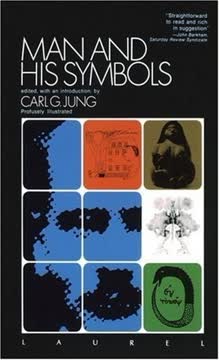

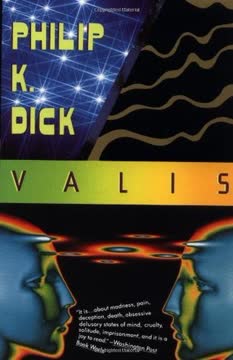
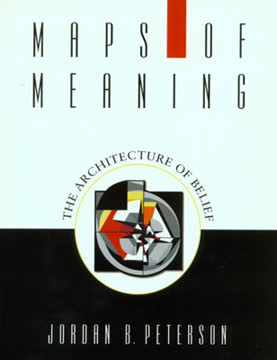
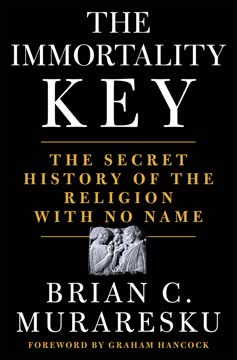
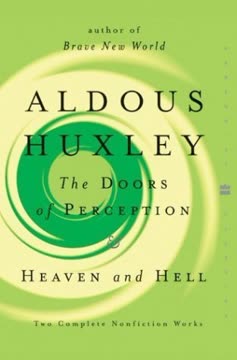
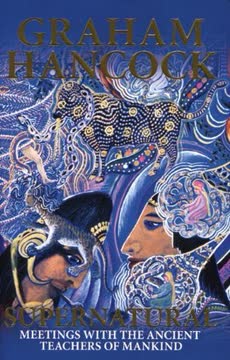
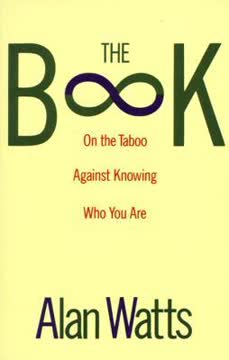
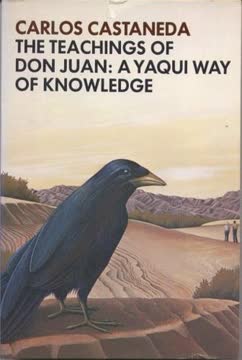
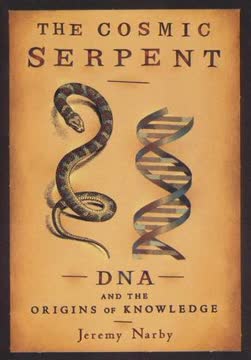
Download PDF
Download EPUB
.epub digital book format is ideal for reading ebooks on phones, tablets, and e-readers.
